
Community Regeneration: Alexandra Park
In 2011, over a decade after the first attempted Heritage Lottery Fund (HLF) bid was submitted, Alexandra Park in Whalley Range was awarded £2.2 million to restore its Victorian heritage and provide essential play and sporting facilities for local people.
The revival of this Grade 2 listed landscape, originally opened to the public in 1870, was match funded by Manchester City Council with an additional £600,000 from Sports England, The Lawn Tennis Association and England & Wales Cricket Board. A total of £5 million was secured for the project.
The local community saw the park fall into disrepair in the long wait for funding. The park buildings; Chorlton Lodge and the Pavilion were both boarded up and subject to frequent vandalism, while the tennis courts were broken and unusable.
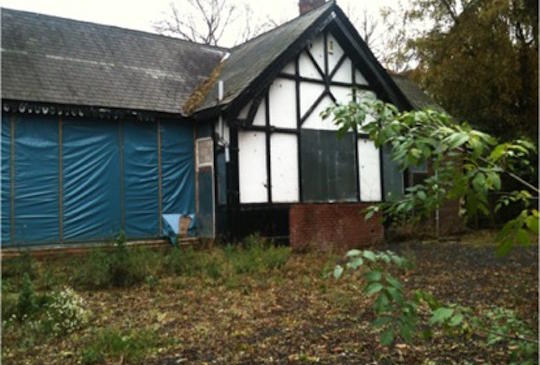
The park was used mainly by local dog walkers and had a dense coverage of shrubs and trees with poor sight lines throughout. The younger children's play area was located in the main car park on the boundary and there was no need or incentive for young families to venture further inside.
A widespread consultation took place as part of the HLF bid to gather local people's thoughts and attitudes towards the park - it was as important to talk to those who didn't use the park as those who did.
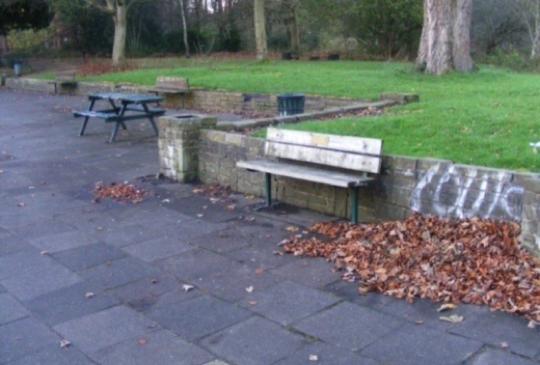
Workshops took place in Hulme and Moss Side, local schools were engaged and SpaceShaper events took place in the park.
Over 300 members now form a “Peoples Panel” which was set up as an online tool to reach those interested in the restoration project via email discussion.
The Friends of Alexandra Park have been supporting the bidding process since 2002, organising volunteering events to get the, “little jobs done,” whilst awaiting the decision of the bid and feeding into the restoration plans once the funding was in place.
Debbie Marsden was appointed as Community Development Officer to work with the existing volunteers and Friends group and build up further community involvement during the restoration process.
The 144 year old park remained open to the public for 18 months while the contractors Balfour Beatty and Landscape Architects URS carried out the physical work. A network of grand sweeping curved paths were laid and the original park design reinstated. Formal beds of flowering plants and shrubs replaced a dense avenue of mature sycamore trees, opening up the space and creating a formal Victorian feature promenade and safe transit route from one side of the park to the other.
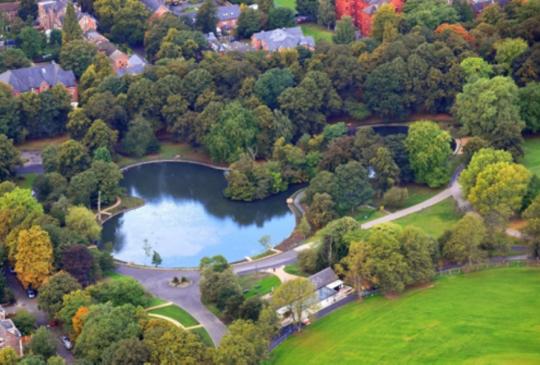
“The historic buildings and landscape of Alexandra Park were at serious risk of being lost forever", commented Paul Benson-Hannam, chair of the Friends of Alexandra Park group. "The park is so much better than before and it's staggering to see how the usage of the park has increased.”
Somewhat controversially, news of the removal of the trees spread through social media and resulted in a fully blown tree protest with regional TV coverage. The protest lasted almost 2 months. “It didn't help that there was a large gap between the consultation and the delivery of the project,” says Debbie Marsden, Community Development Officer. “They were well loved but hindered sight lines through the park and created a dark closed-in area”.
This is now the most open and formal area of the park with wide paths, a circular flower bed trimmed with granite sets and majestic staircases bordered with planted urns. The promenade also traverses the northern edge of the park drawing pedestrians away from the main road.
The park's two original buildings have been restored to their formal glory. The interiors of both Chorlton Lodge and the Pavilion have been refurbished to a high standard to accommodate community use.
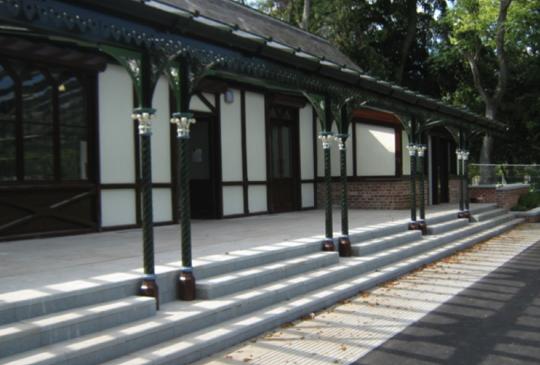
The Pavilion, located in the heart of the park is now open and fully functioning for events and has already been used for classical concerts and as an art exhibition space. With a large covered terrace overlooking the newly laid cricket square, the building's beautiful aspect lends itself to summer events in the park whilst the buildings functionality makes it an ideal classroom space for schools after a session of pond dipping in the adjacent lake.
A cafe run by the Tea Hive of Chorlton is resident in a separate part of the Pavilion and is currently open at weekends. They hope to open everyday from June 2015 throughout the summer season.
Chorlton Lodge, a Victorian building located at one of the park entrances, now houses a smaller community meeting room, kitchen and bathroom. It's hoped that the building will be the volunteer base for the park and that once the Health & Safety checks are completed the space will be open for use.
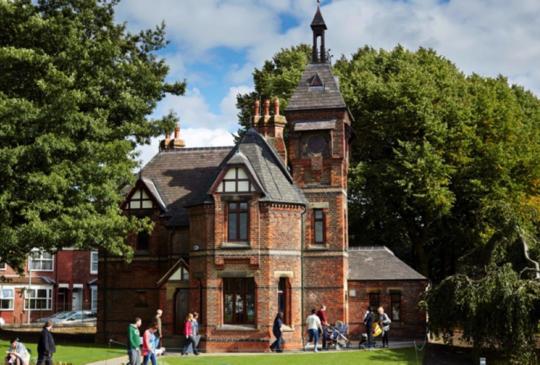
The Heritage Group would like to open the lodge as a heritage visitor centre. A series of display boards depicting the park's history and its restoration can be found here and a recent Green Badge tour visit has resulted in the park's inclusion on its tour guide list.
New sports facilities include a brand new, flood lit, all-weather tennis court. Already well-used, free coaching sessions are available on Sundays for pre-schoolers, teenagers and adults and the park has also launched, “Tennis Tuesdays,” aimed at women, to encourage socialising and participation in sports.
The cricket square is unfenced, has a deep boundary and is defined by a perimeter of mature trees, ideal for spectators and children playing on the perifery. “It's a community facility, so fencing it in would send the wrong message”, says Debbie, who’s already on the hunt for funds for plastic wickets so that people can play casual cricket in other areas of the park while the square becomes established.
With four teams already playing cricket at the park, ten local primary schools in the nearby area and a Cricket Development Officer providing taster sessions over school holidays, there is now a real push to get the local community involved in the sport with an aim to foster respect for the newly laid cricket green and protect it from adverse use.
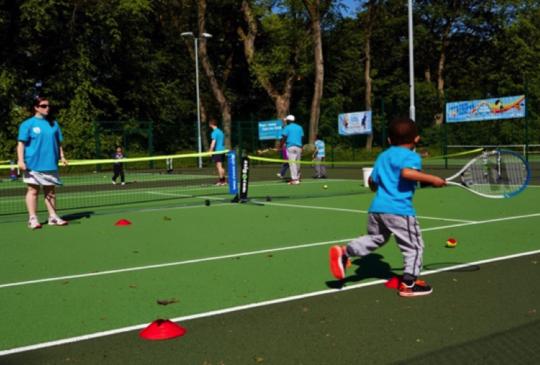
The newly drained and refurbished lake has fishing platforms and a pond dipping area for school use. A pair of swans have also recently become resident there for the first time. Debbie is supporting the formation of a local fishing club here, as a number of residents have expressed a keen interest in the sport. Adjacent to the lake is the new young children's play area, now located in the central hub of the park, within walking distance of the pavilion and community cafe.
“I would say the restoration has been a huge success," commented Jessica Stacy, a park volunteer. "Two years ago the park was used mostly by dog walkers, today, whatever the weather, there are people using the park for tennis, cricket, football, basketball and bike riding, skating, fishing, walking the dog, jogging, bootcamps, keep fit groups, picnics, art installations, bat spotting, pond dipping, walking, talking or just sitting and enjoying the sights and smells that surround them.”
So, where do they go from here?
Fortunately, the physical maintenance of the park and its new facilities are protected. There is a 10 year maintenance commitment written into the HLF bid and, despite the complicated nature of different contractors looking after different elements of the park, (the cricket square, the newly planted areas and the mowed areas all have different maintenance teams) with some coordination, this is all achievable.

Park Management is also working towards offering traineeships via the current Landscape contractor Ashlea in Land Based Services for 16-18 year olds who will train alongside a horticulturist in Alexandra Park.
The real challenge with this project comes from the community. The long term success of the park will depend on the local community, users and groups claiming it as their own. To try and get a wider representation of parks users, four targeted forums that were identified during the consultation process have been set up, alongside the existing Friends Group, to form a new Community Governance structure, these include; The Heritage Group, The Wildlife Group, The Sports Alliance and The Arts and Culture Group.
The Governance board is made up of a representative from each of these groups including the Friends, local councillors and members of the MCC park management team. The board ensures that the different uses of the park are considered in any decision making and is involved in the over arching coordination of park events, fundraising, and guaranteeing that the facilities in the park are maintained for future generations.
“We need local people to understand the decisions that we’re making and be part of those decisions so that if we do have to reduce or change anything, we arrive at a conclusion together, instead of it being top down constantly,” Debbie explains. “The governance structure is, at the moment, our model of communicating with the local community, getting the right messages out there and helping local people take ownership of the park. If it doesn't work however, it’ll be back to the drawing board and we’ll try something else.”
Having a dedicated member of staff who can work with the stakeholders and promote activities in the park is evidently an efficient way to develop community ownership and make people feel safe. Debbie has her work cut out - her post is funded for just two further years and one of her key priorities is to, 'establish’ the governance forums so that they have access to funding streams.
Balancing and responding to the needs of the different stakeholders was the most challenging element of the project delivery according to Debbie:
"Having a physical presence on the ground has been invaluable in quashing misinformation regarding certain changes. Getting the Community Governance in place to get the messages out there is vital, there are a lot of rumours that are spread so nipping those in the bud and using your connections in the community to do that is the key”.
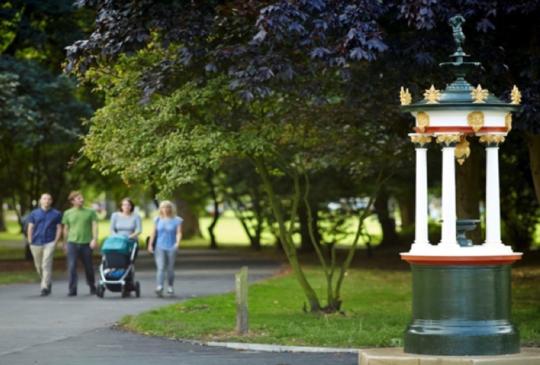
Chair of the Friends Group Paul Benson-Hannam agrees that making sure the right messages are in the public domain and that local people are prepared for any big physical changes is essential in such a major project:
"For me, the most interesting lesson that came out of the project was the need to be prepared to manage the speed and intensity of public response via social media to any controversial plans within the community."
Debbie also admits that with a big project such as this, there are many ways in which people can get on board in creative ways apart from the traditional muddy volunteering (she stresses that there's always a place for this however) for example, a local student designed the new branding for the park and dedicated volunteer Jessica Stacey researched and wrote the historical interpretation for the new park signs.
"That's where the key to engagement lies," observes Debbie. "We always think we know the best way but we don’t, there’s a lot of expertise out there, people who can help and offer new ideas”.
She adds, "a project of this nature won't please everyone all the time. There will always be a clash of interests particularly between park heritage purists and those who want a natural park, but clear communications through creative medium, both hi and low tech will help mitigate the negative rumour mill. The power of information, ultimately - its all about finding ways to get it out there."
The local community now has a beautiful landscape to enjoy and they and many others have flocked to the park since it reopened in August 2014.
Visit the Friends Group on their Facebook page and join Alexandra Park's People's Panel by emailing your interest to alex.park@manchester.gov.uk.
Learn more about the Alexandra Park regeneration project here.
Contributor Profile
Ellen has a Masters in Landscape Planning and Management from Manchester University, her thesis examined the role of trees in creating and enhancing urban character.
She has worked for the environmental charities Groundwork Trust and Red Rose Forest delivering community based greening projects in Manchester and Salford and passionately believes that increasing tree coverage and green spaces in our cities will improve local residents’ quality of life.




